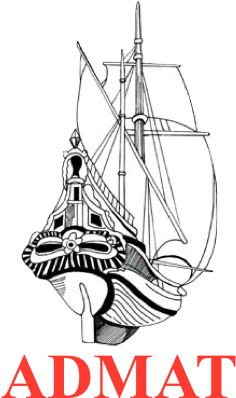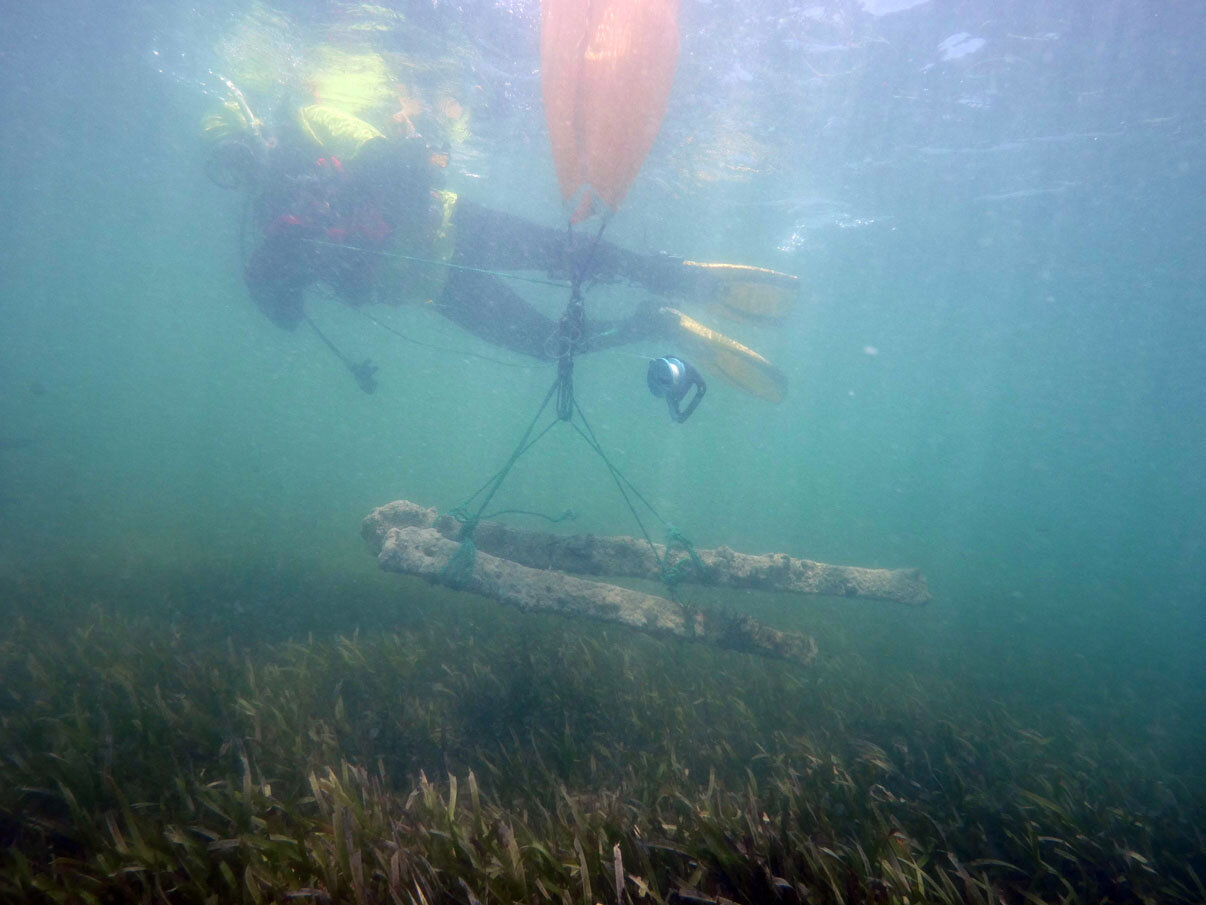
Raimund Krob transporting some of the gudgeons to the beach.
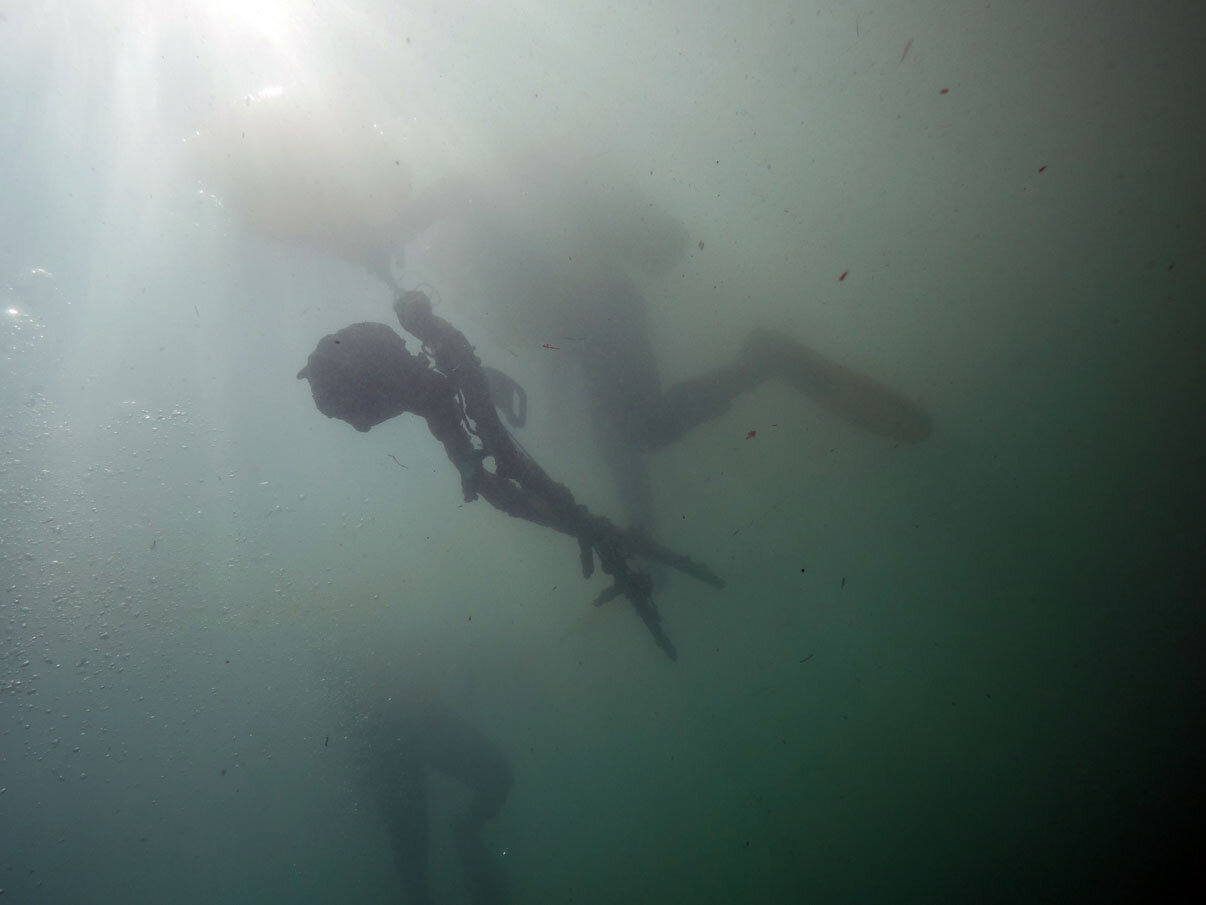
Two more gudgeons heading for the surface.
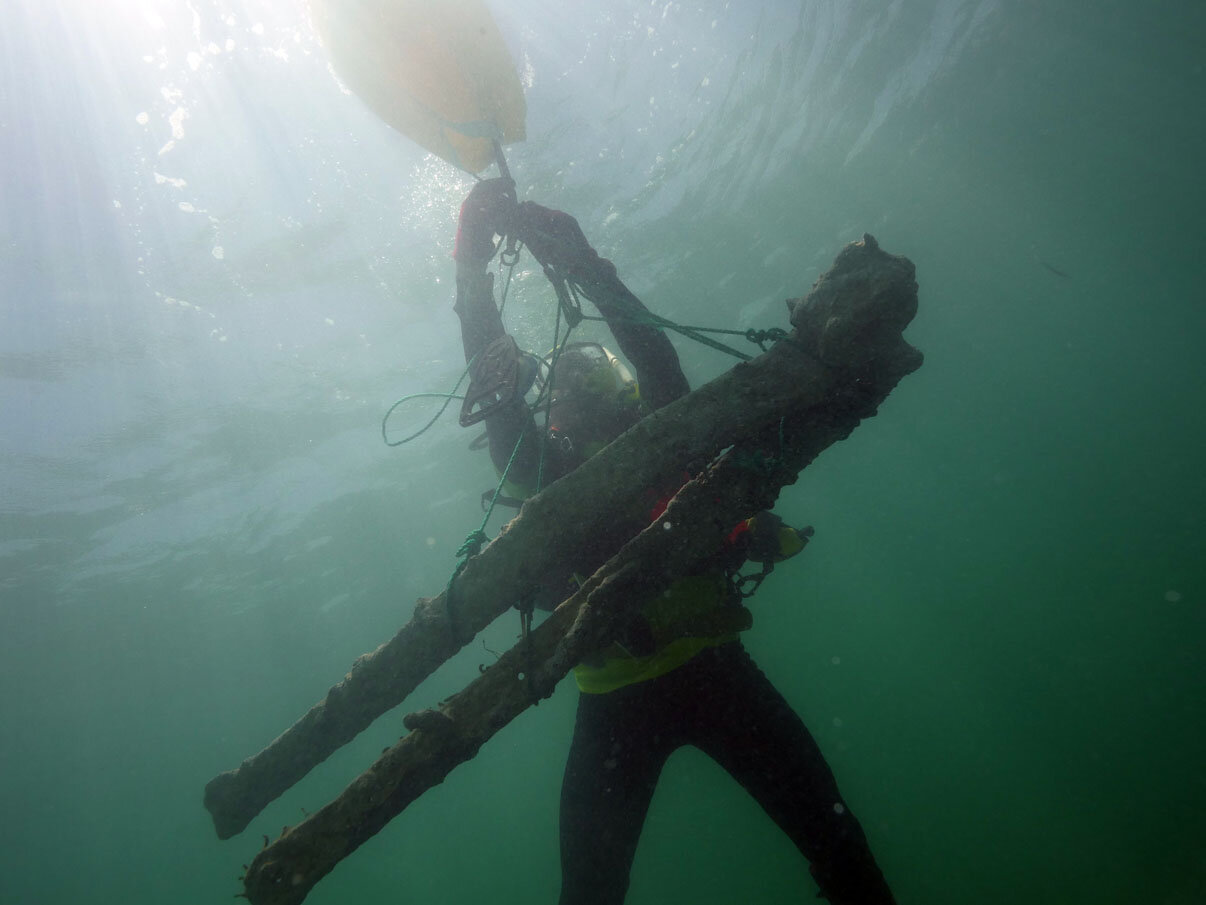
The hard part was to secure the gudgeons so they did not rub against each other.
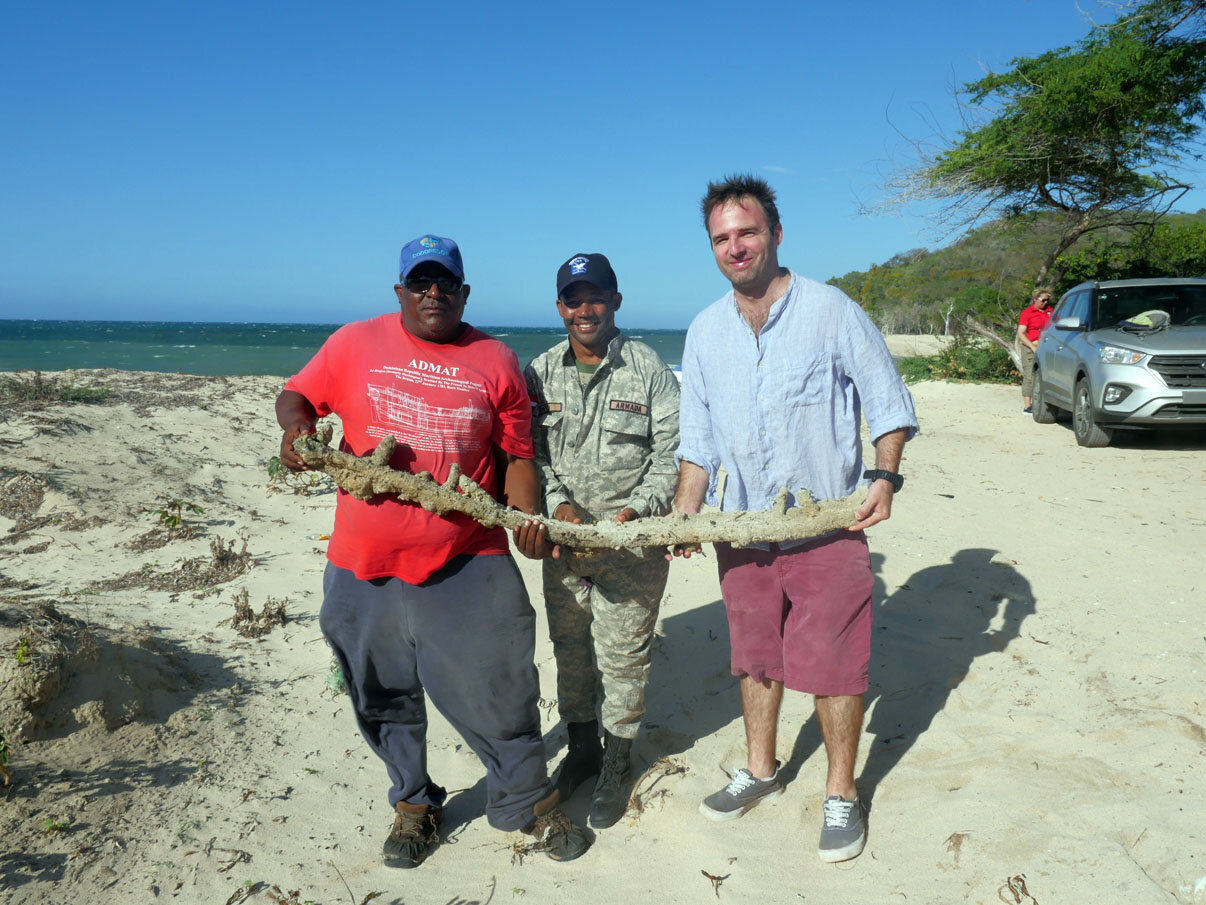
One of the gudgeons successfully raised.
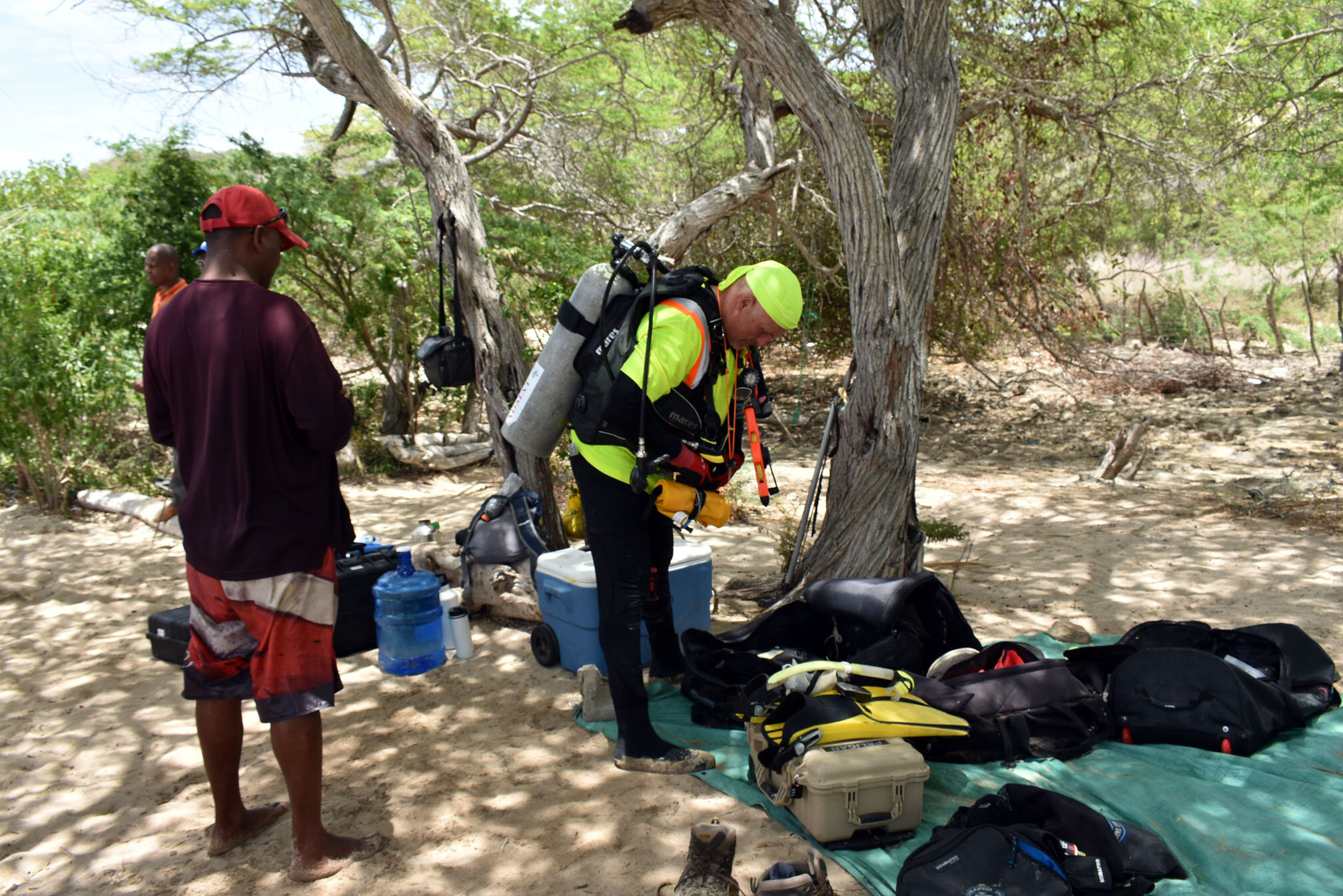
Raimund Krob getting ready for a dive.
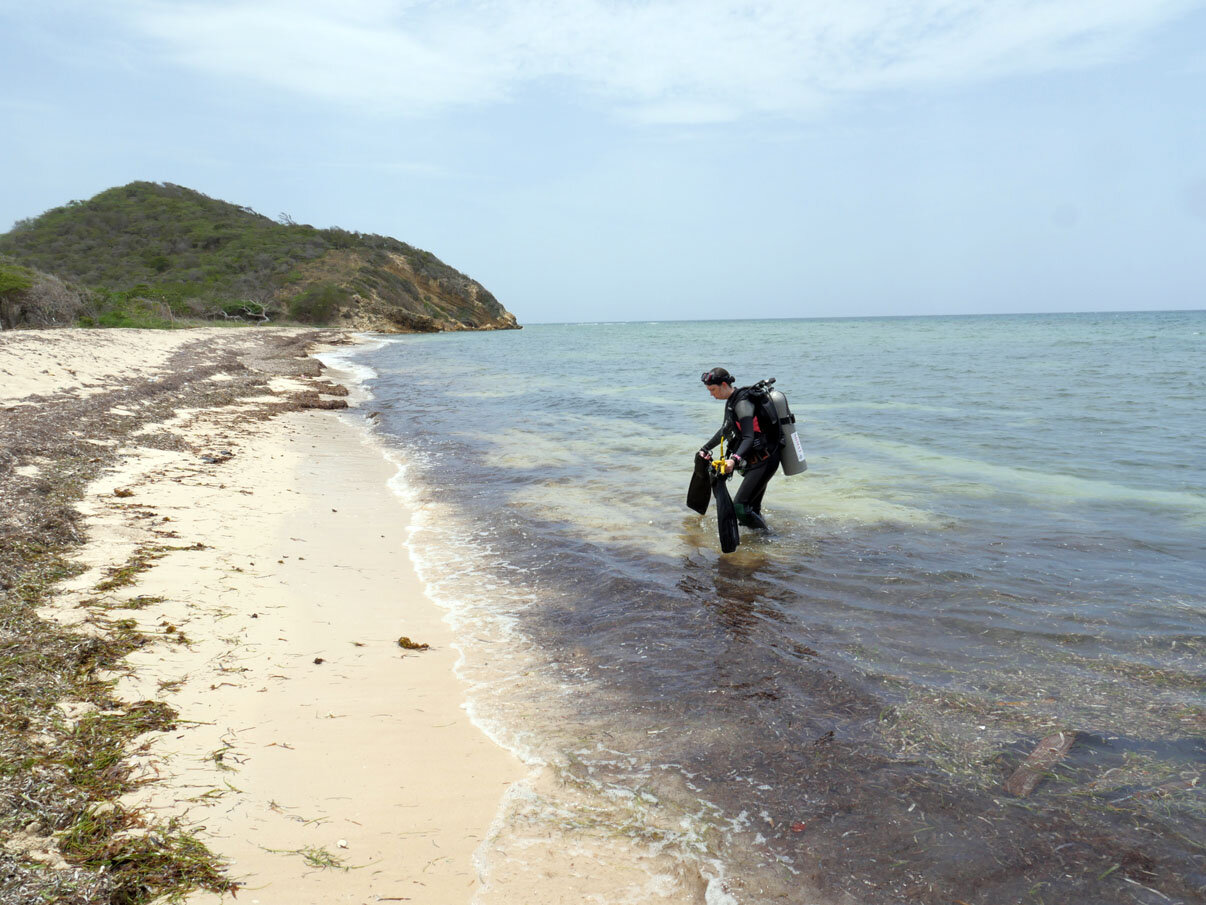
Team member returning to re tank.

Raimund and his team stopping off for an ice cream on the way back to the Centre.
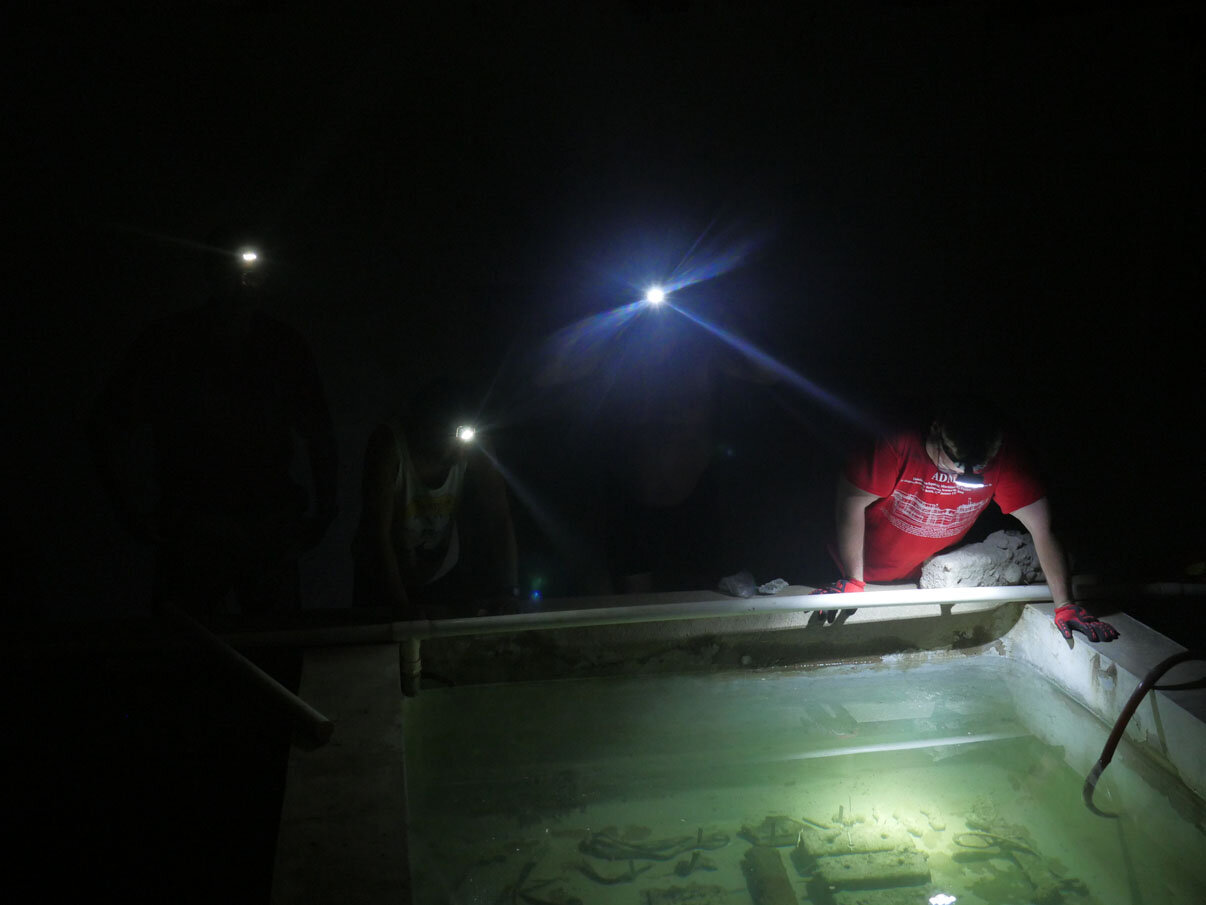
Placing the artefacts in the conservation tanks.
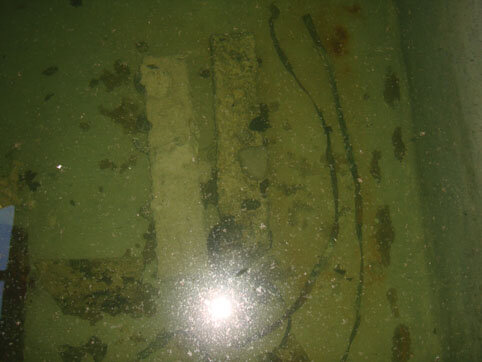
Some of the diagnostic iron ballast bars in the conservation tanks.
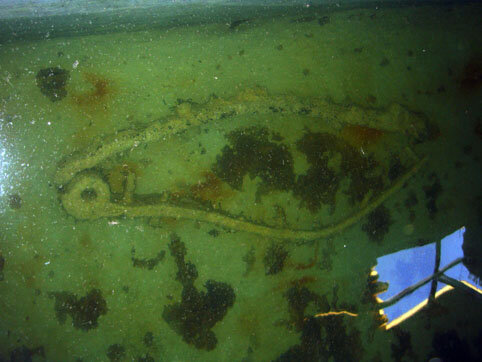
A matching gudgeon as one of the arms had been broken off the centre spindle by the force of the beaching during the wrecking process.
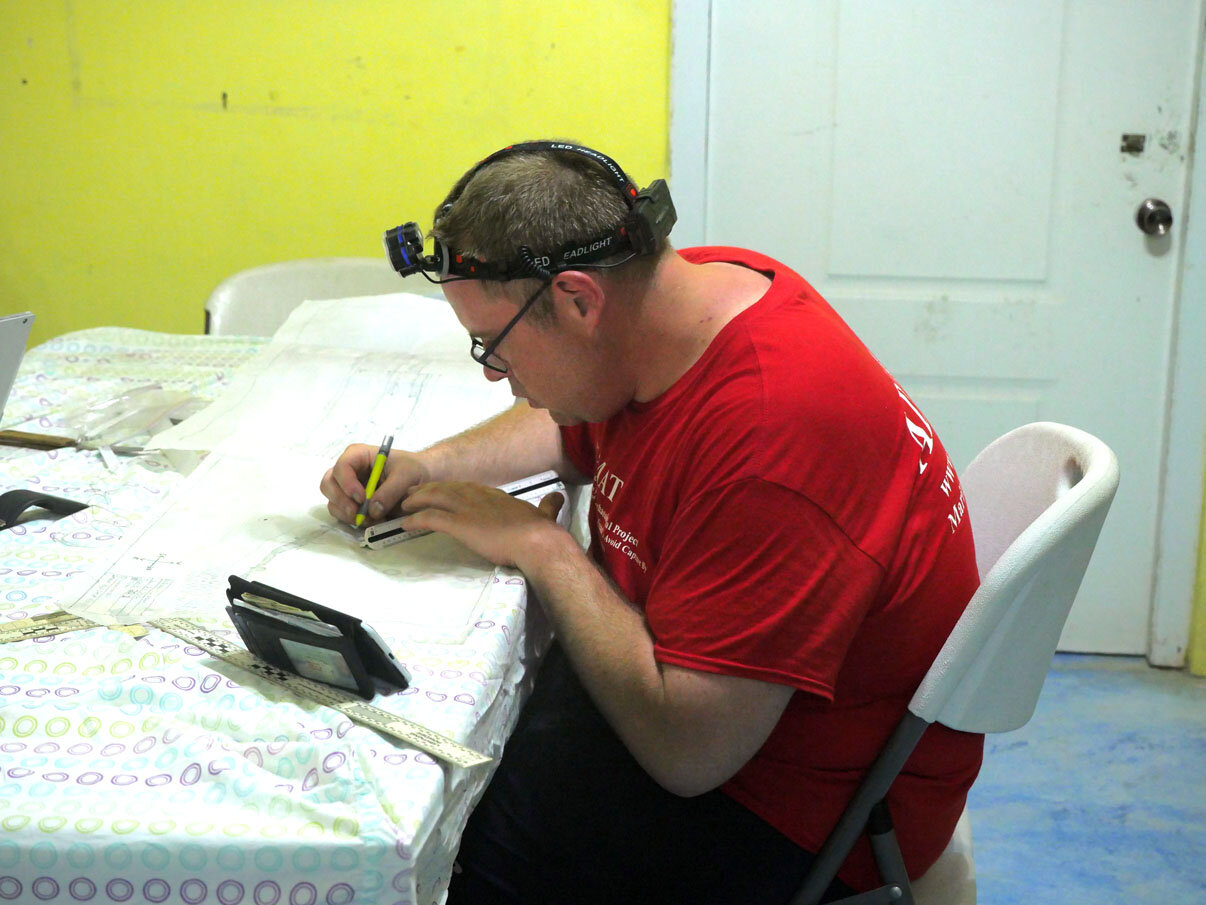
Steve Abell hard at work one evening on hs scale drawings.
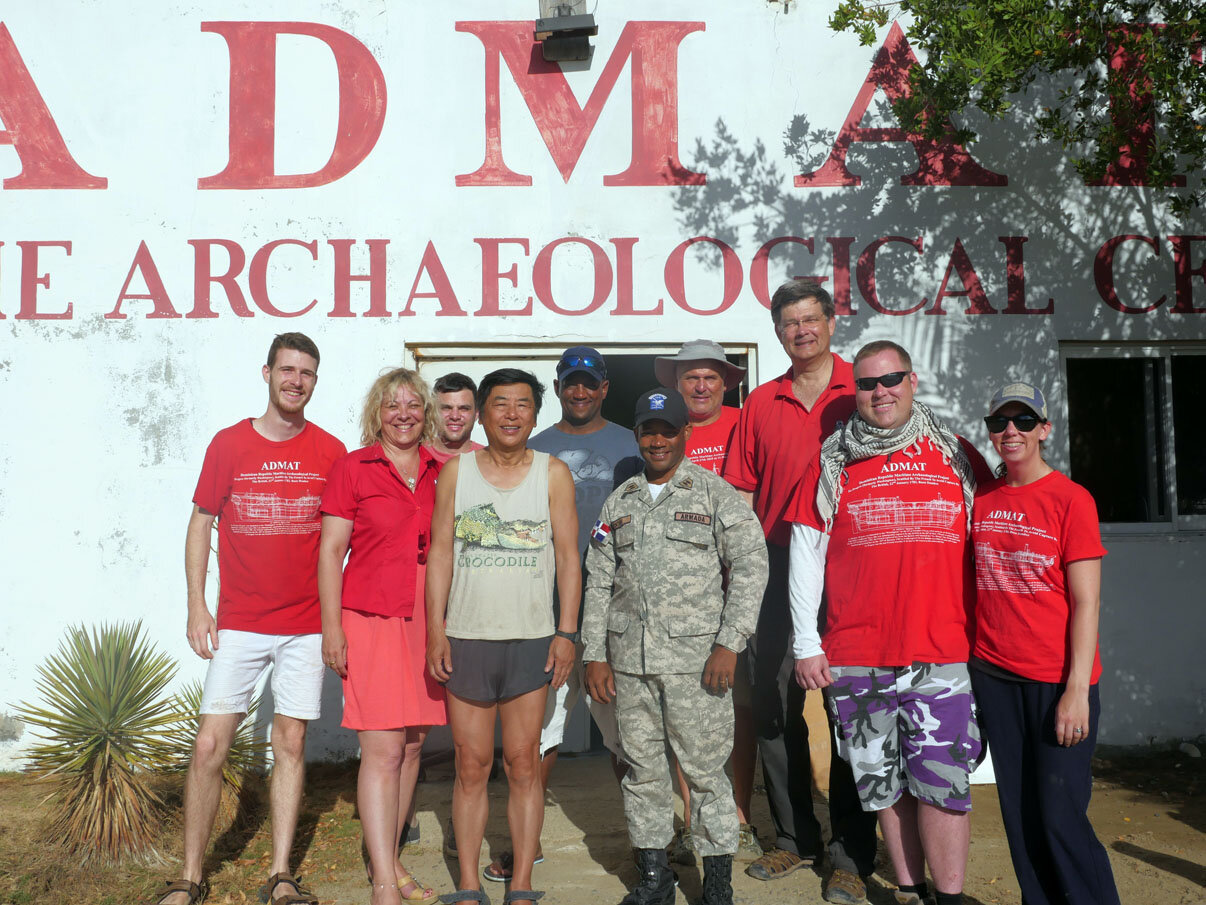
An early morning photo of the current Team.
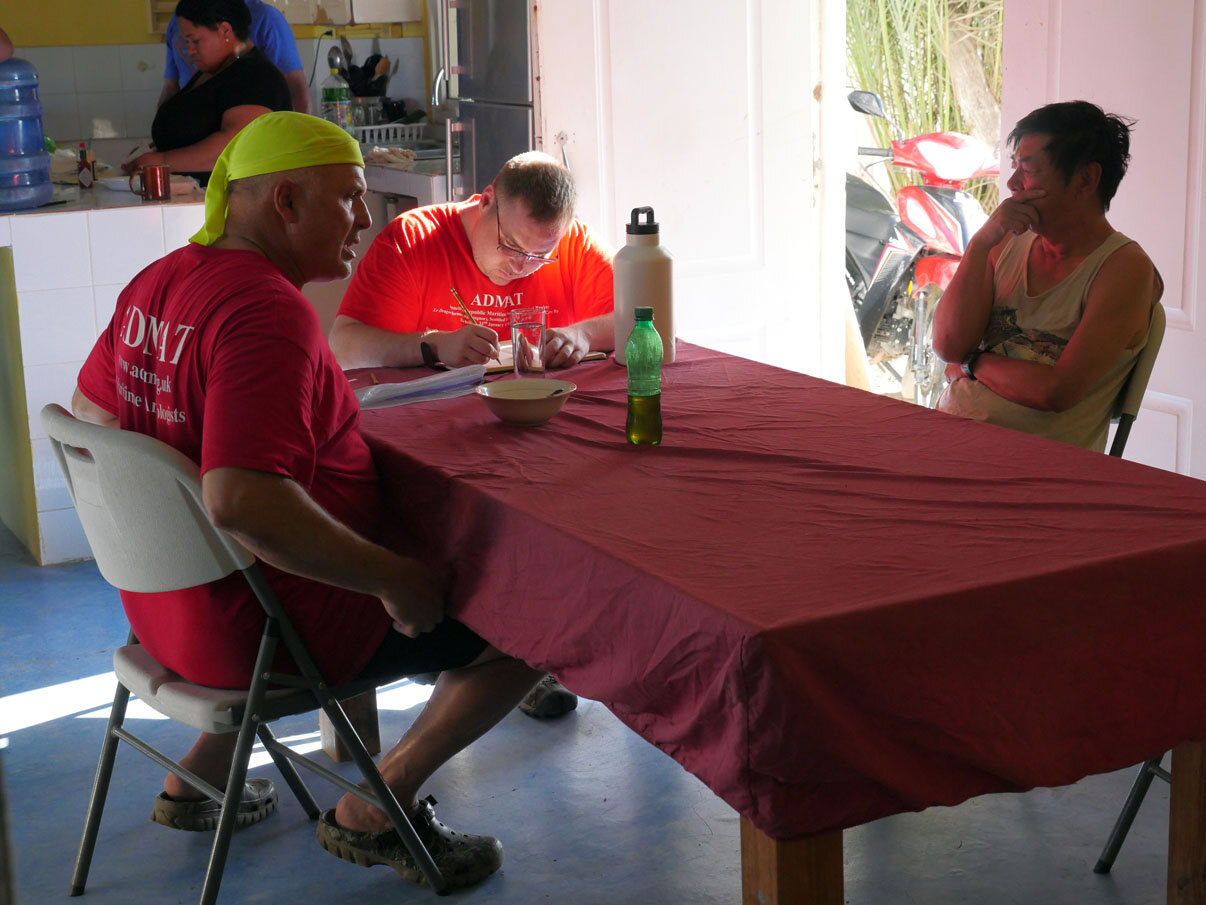
Early morning planning session prior to departing to the wreck site.
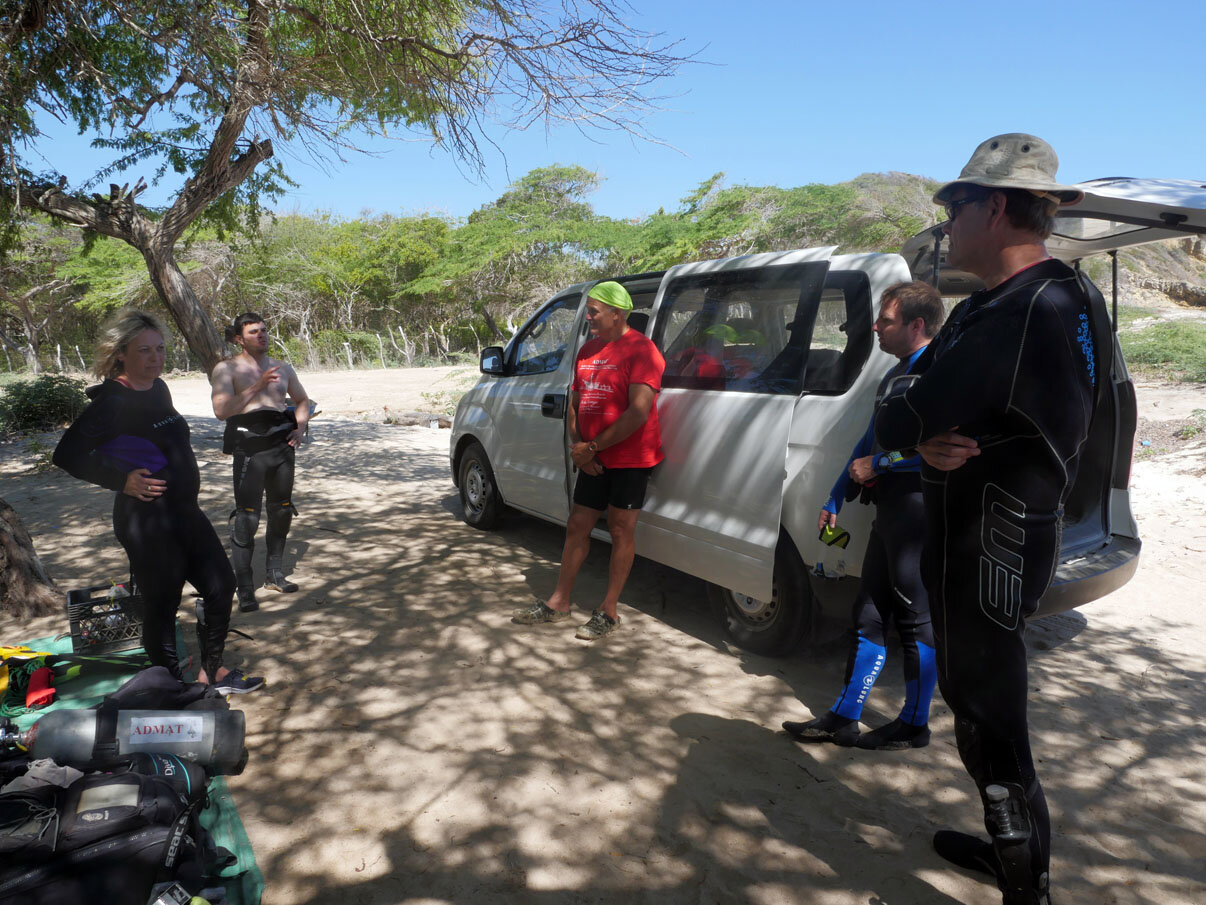
The daily Health & Safety briefing prior to the first dive of the day.
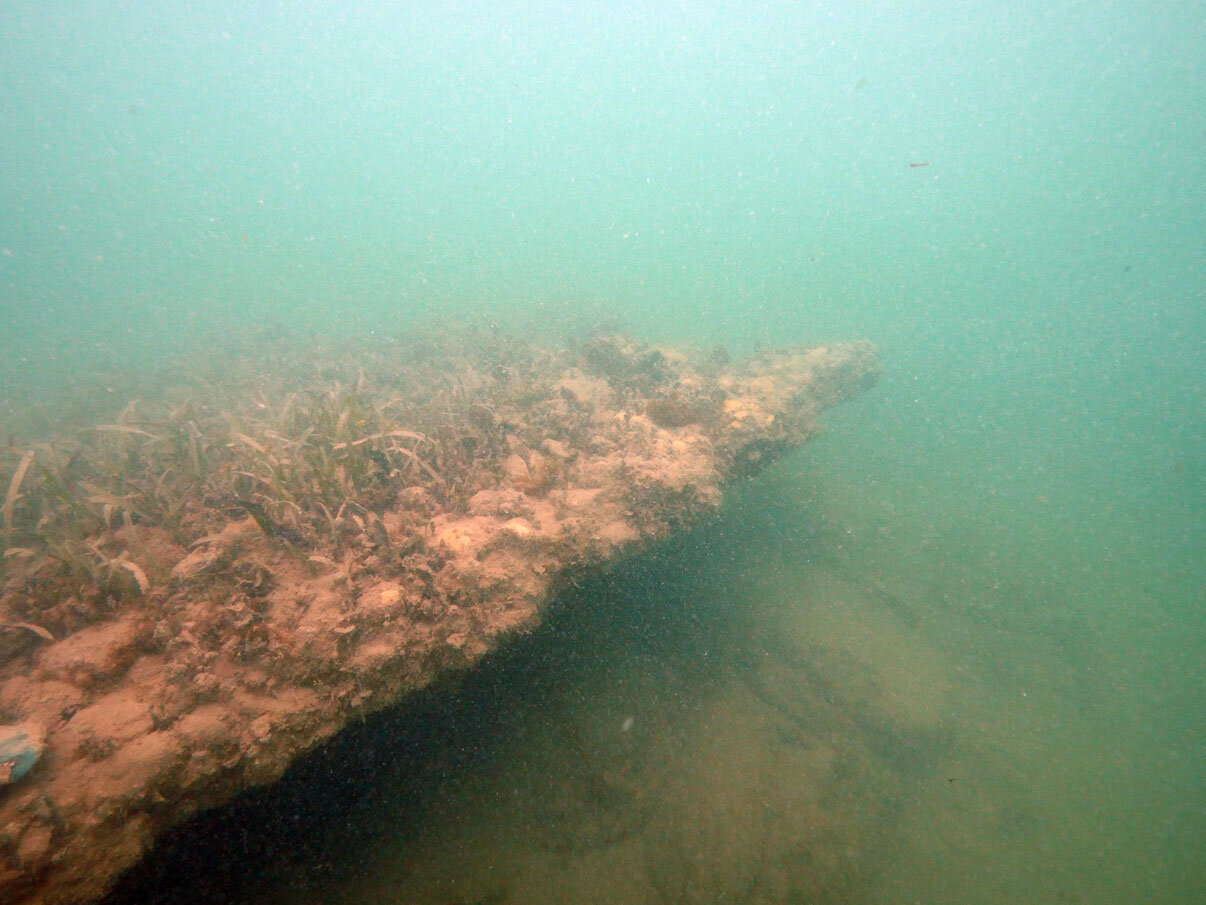
The port side amidships ballast bars which concreted together keep the hull structure and defy gravity.
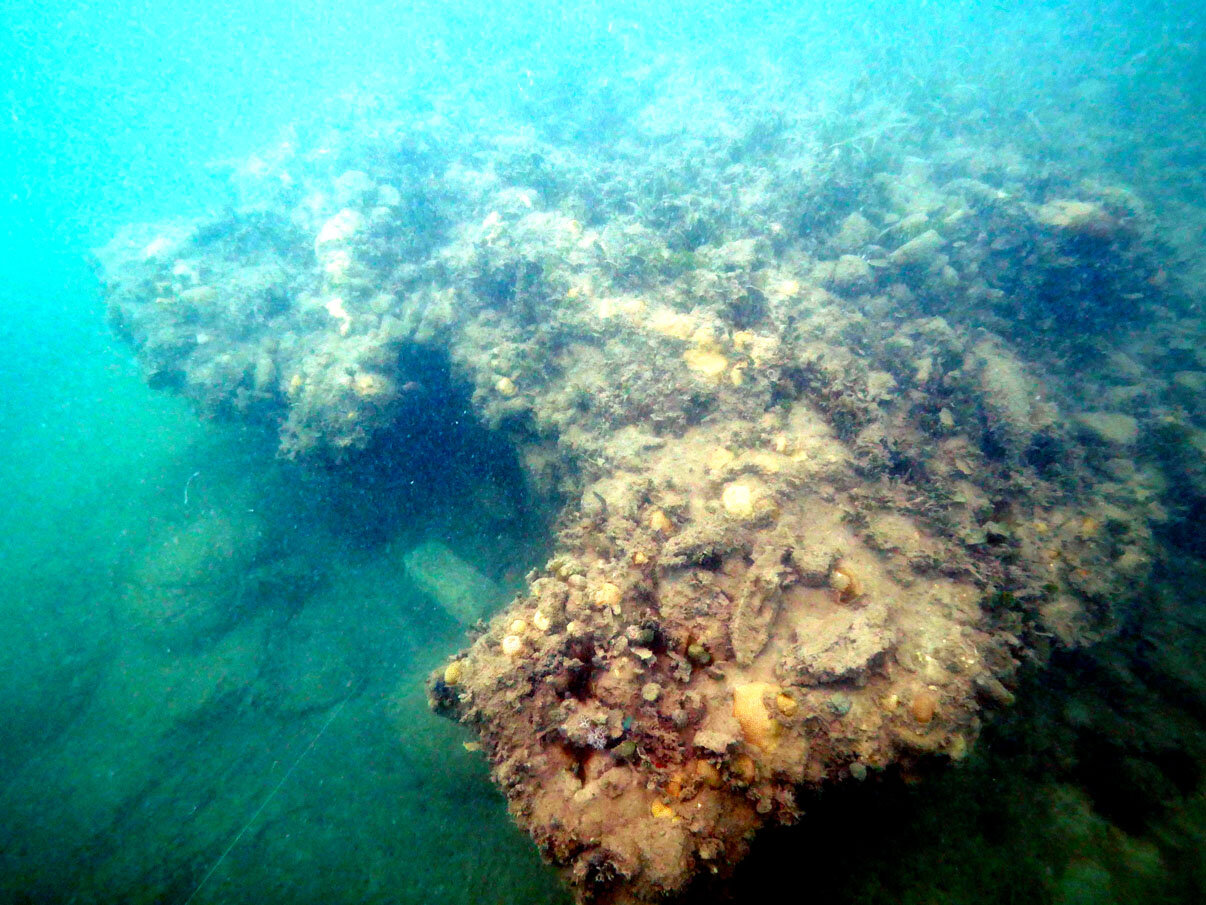
The amidship break in the hull where the main mast would have been. The square cut out section is where te shot locker was before the explosion ripped the ship apart.
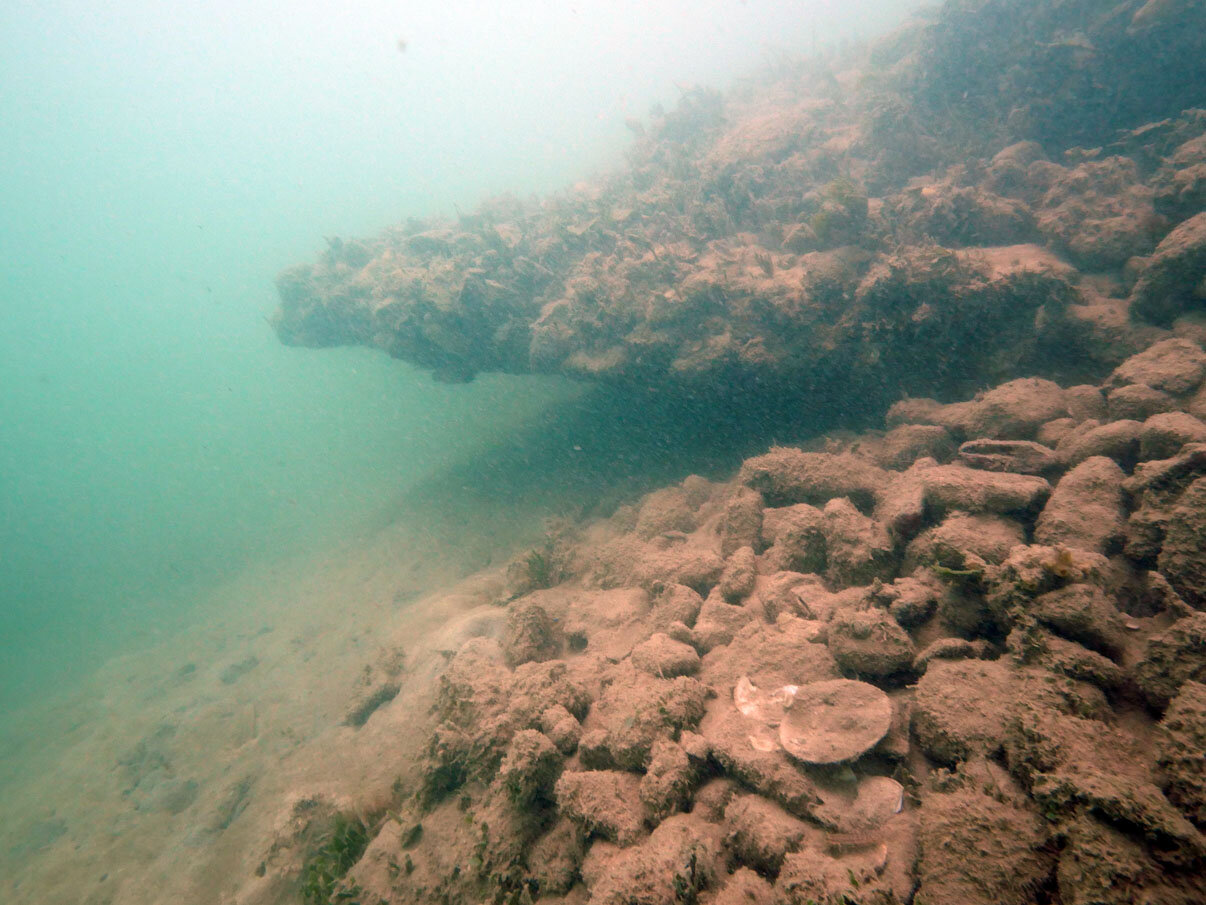
The starboard side looking towards the break with ballast stones in the foreground still on the hull planking.
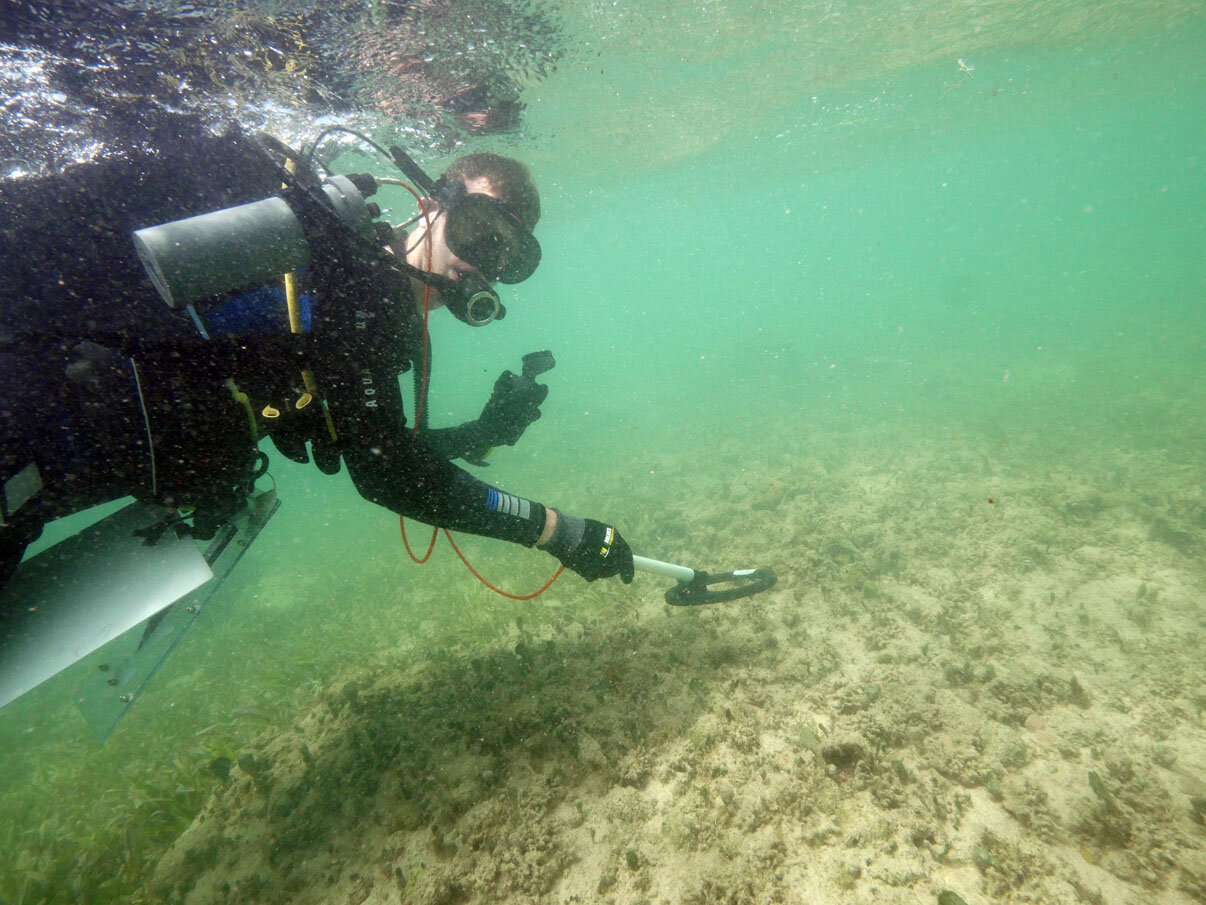
Connor conducting a geophysical survey with an Aquascan Aquapulse metal detector.
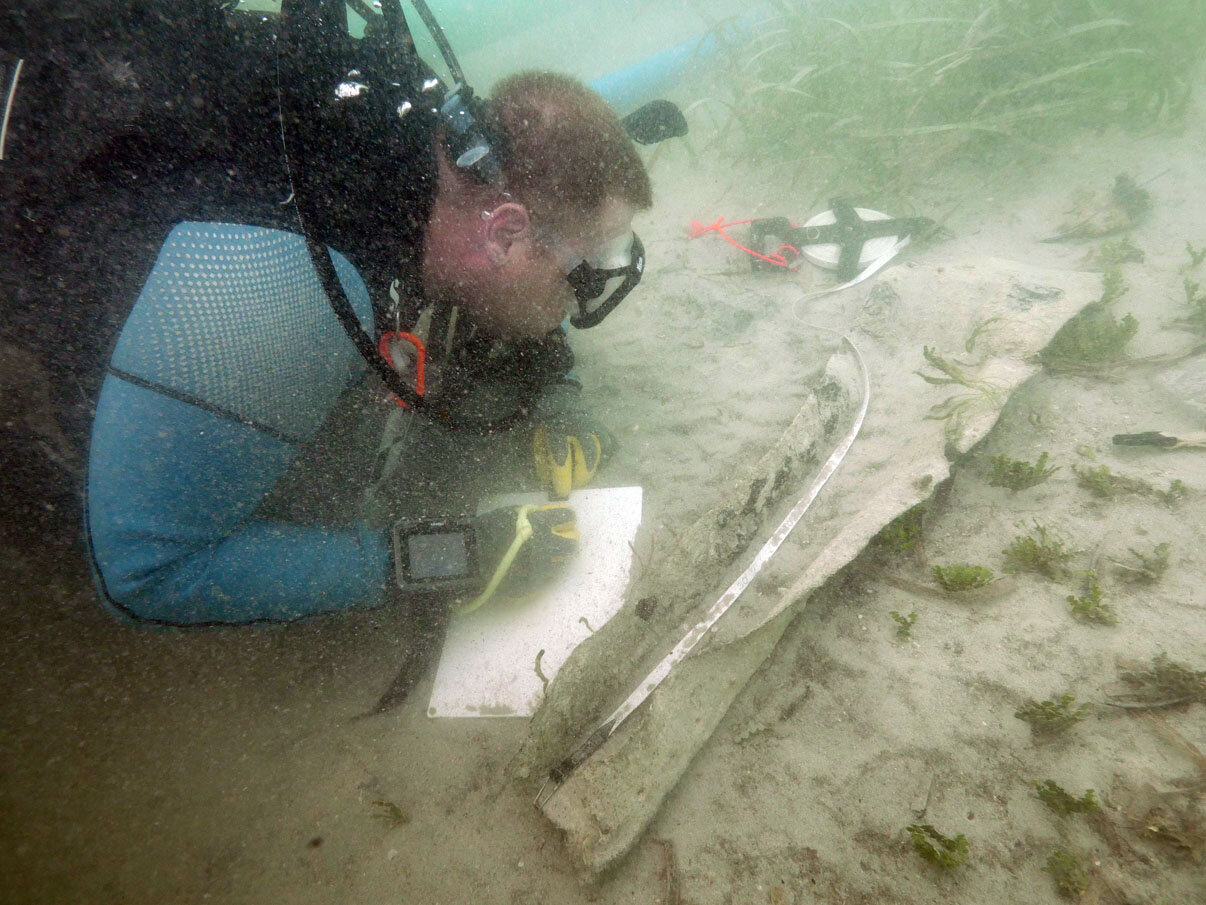
Steve Abell documenting a piece of lead sheeting which was wrapped around one of the ends of a gudgeon, possibly by the force of the explosion. Most of the square nail holes along the sides were empty of copper/bronze nails, but a few were still there.
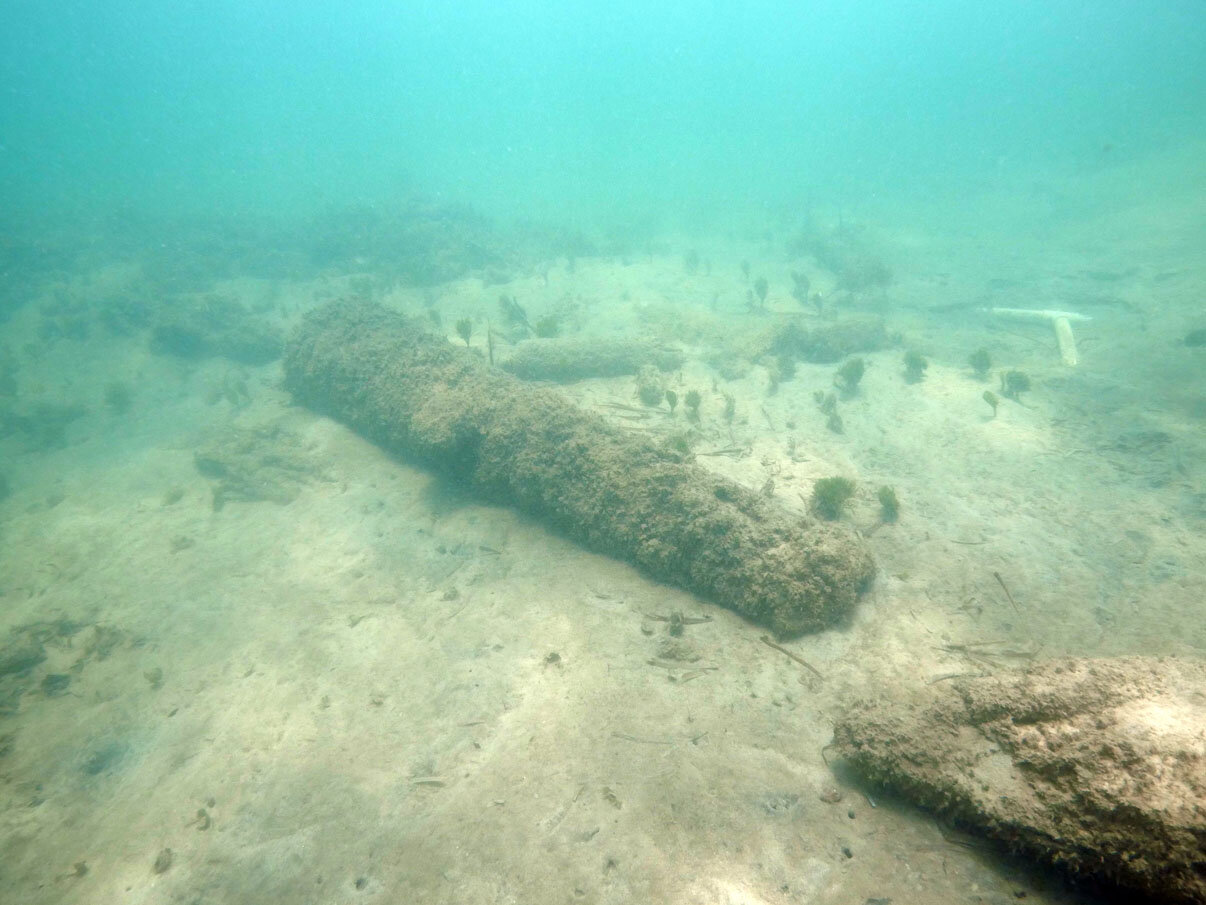
Cannon 2 with the 2000 survey white grid sections to the right of cannon 1 which was still located under feet of sand.
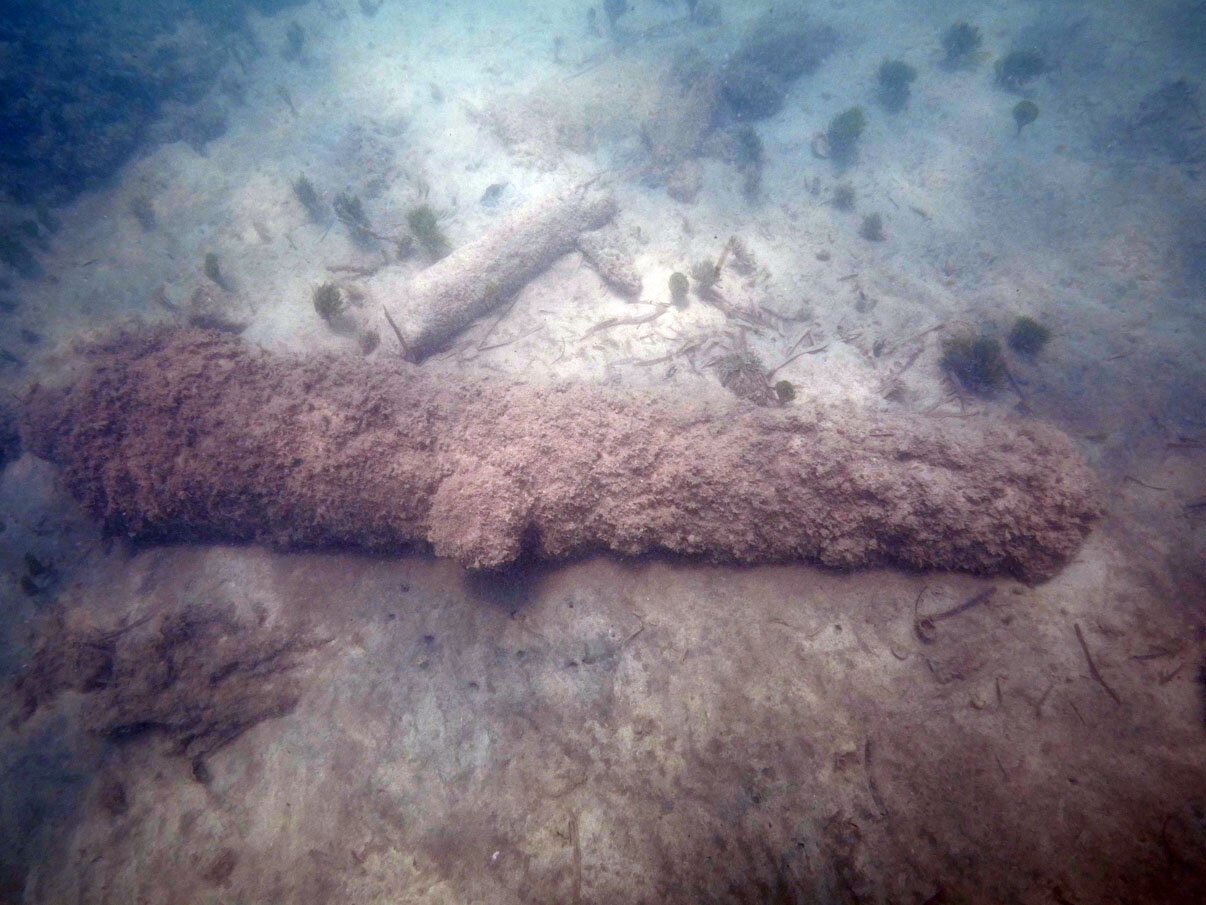
The cannon is still covered with marine growth giving it a ”furry” look to it. Note from the position of the trunnion that the top side is in fact upwards.
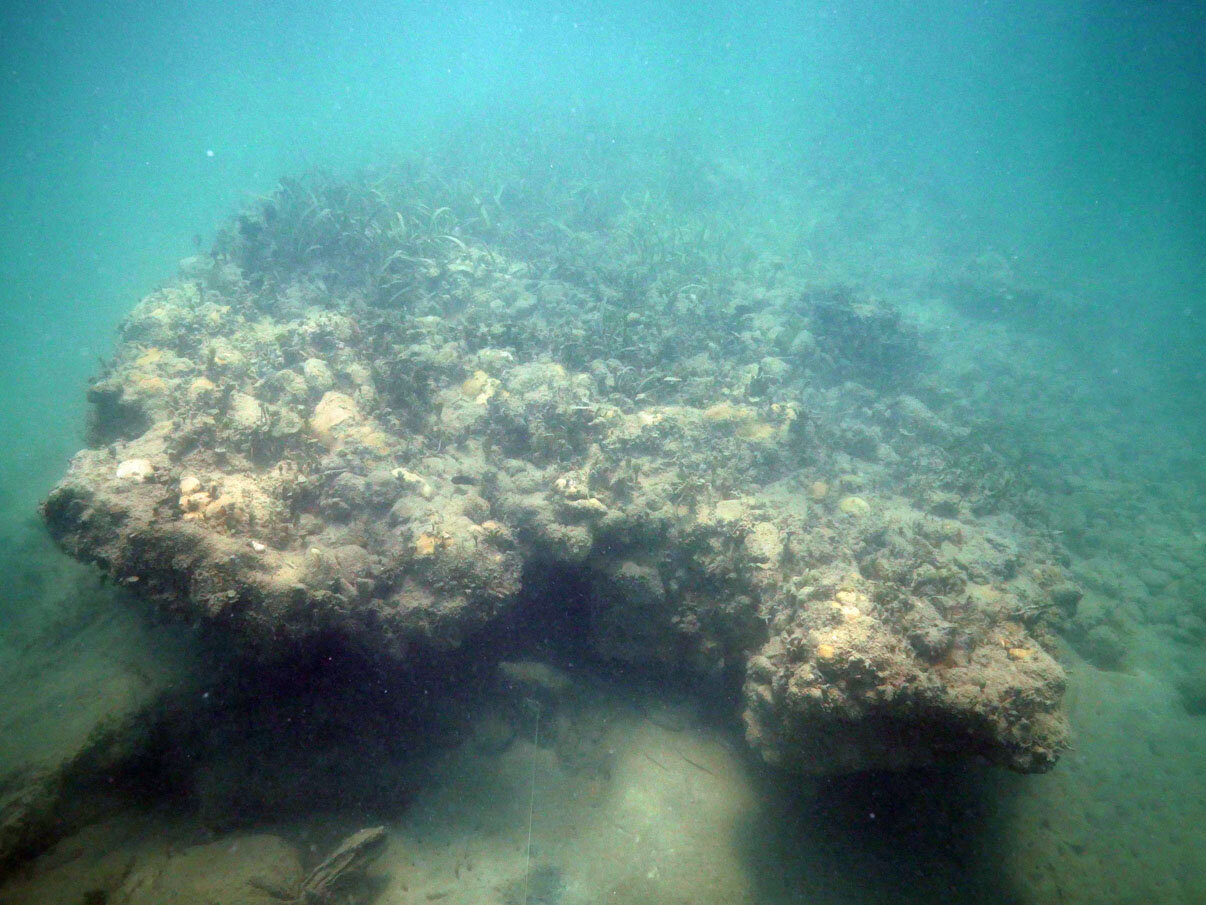
The list to the starboard side can be clearly seen, as can the ballast stones which have been washed by the storms from the port side to the starboard side.
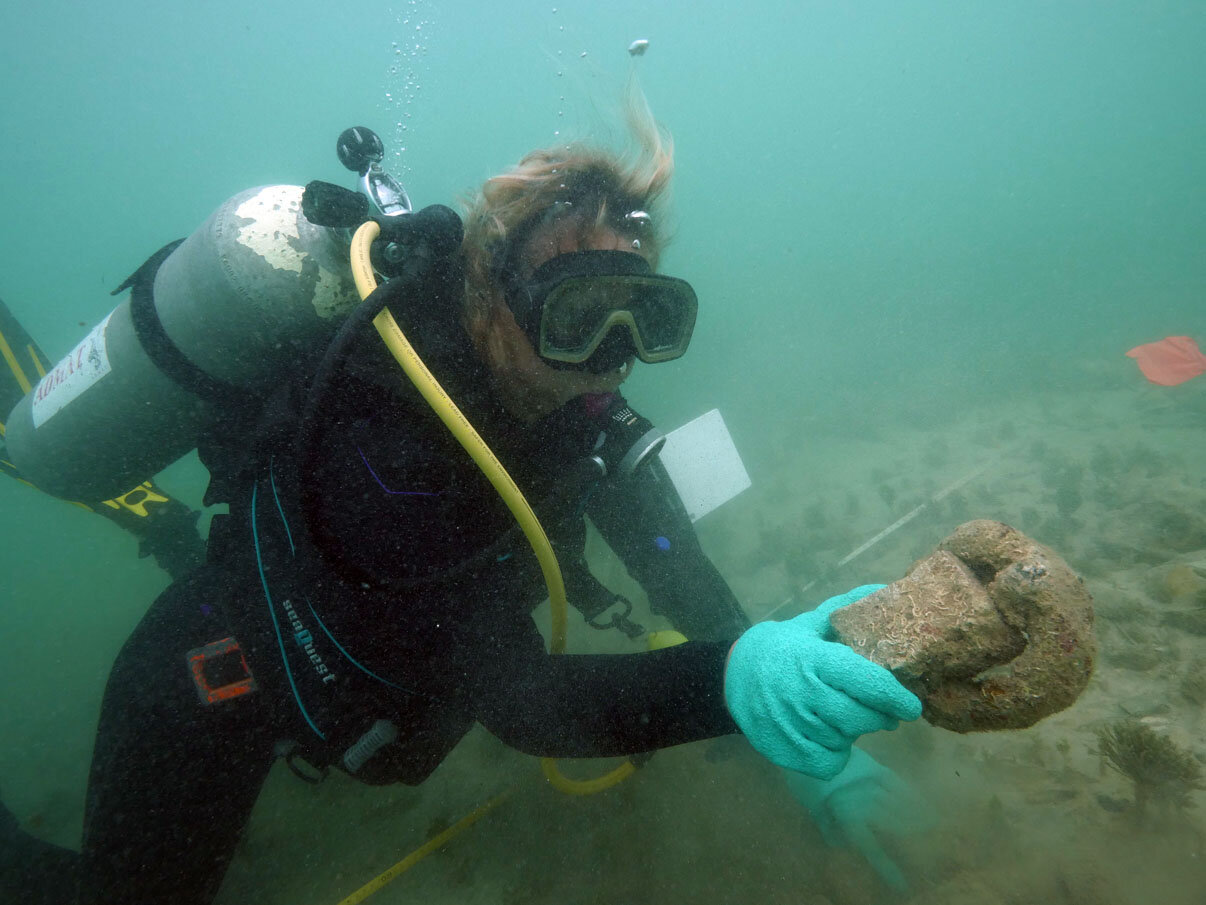
Dr Florence Prudhomme with an iron ring with a half brick from the galley attached by the forming of the concretion.

Close up of the iron ring with the galley brick.
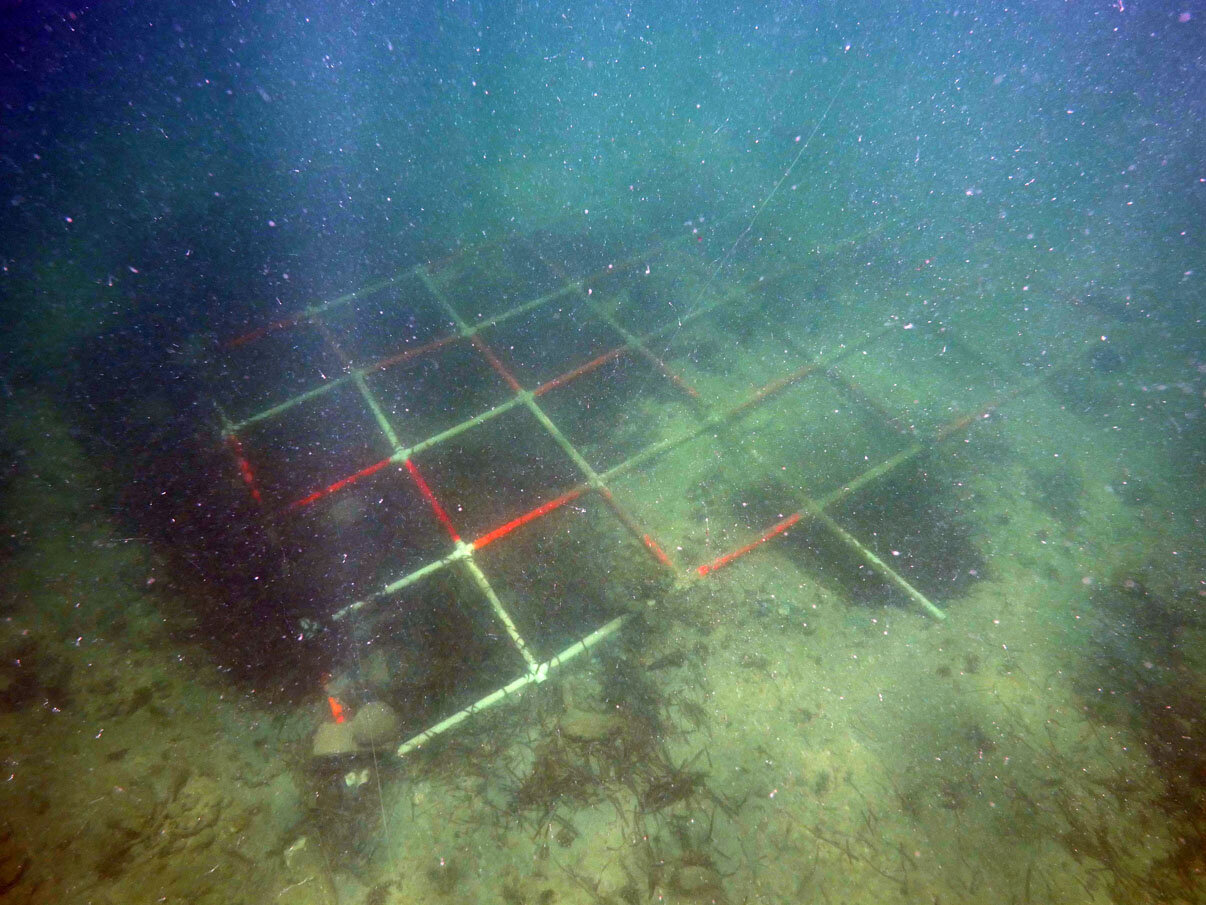
The survey grid placed in the same location as the 2018 survey grid, enabling the survey work to continue.
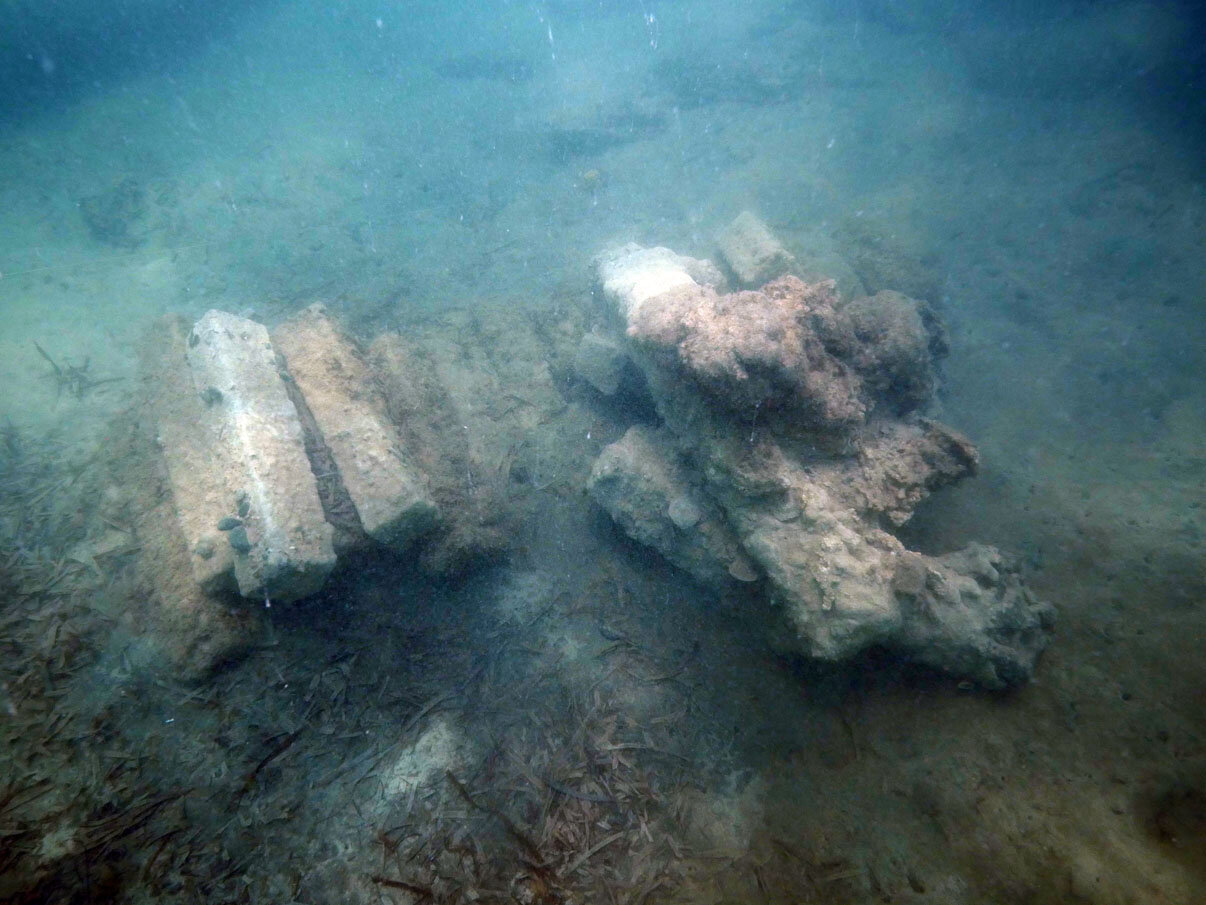
The iron ballast bars, which were measured into the survey grid and then removed, stacked in the amidship break area on top of the long concreted ion bars.
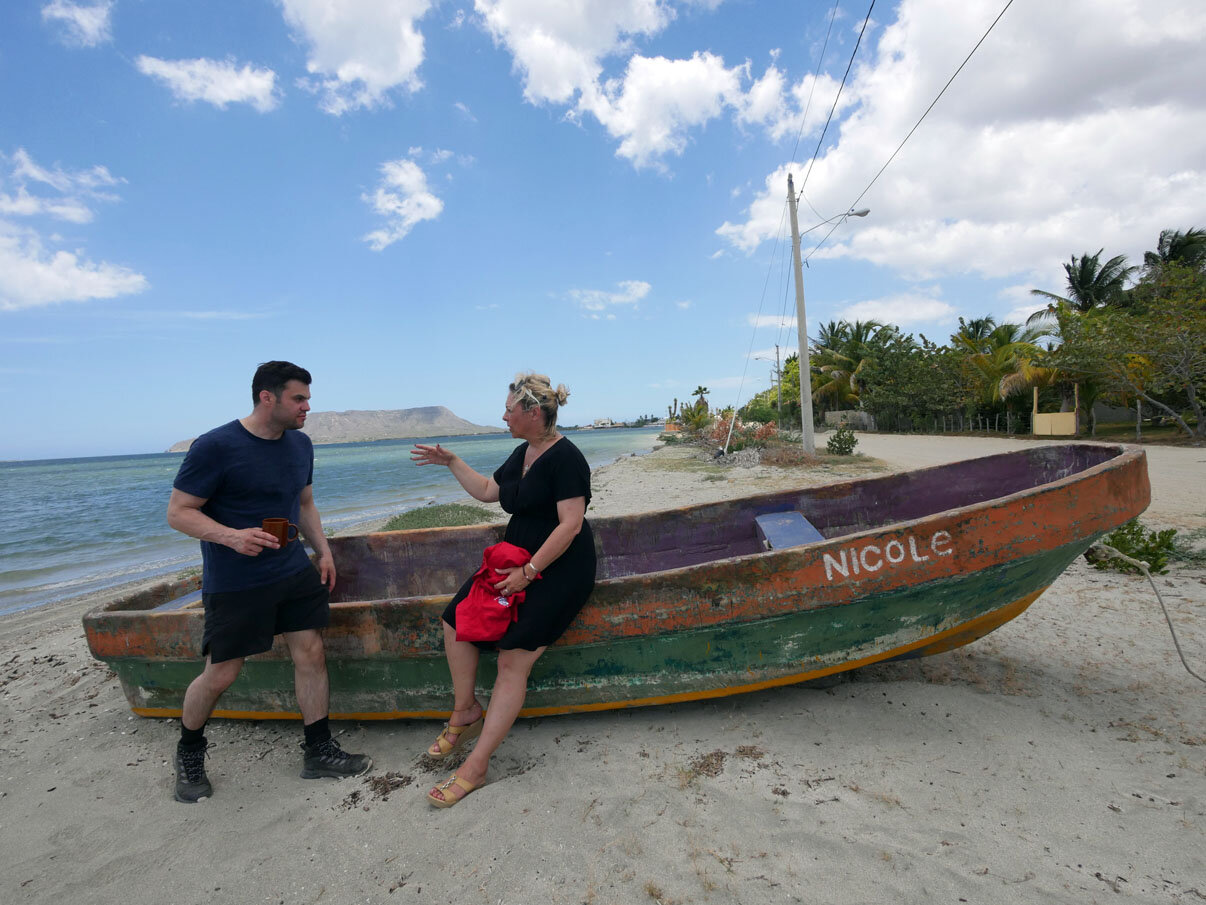
Dr Florence Prudhomme explaining some of her research to Steve Frehn in a break from filming.
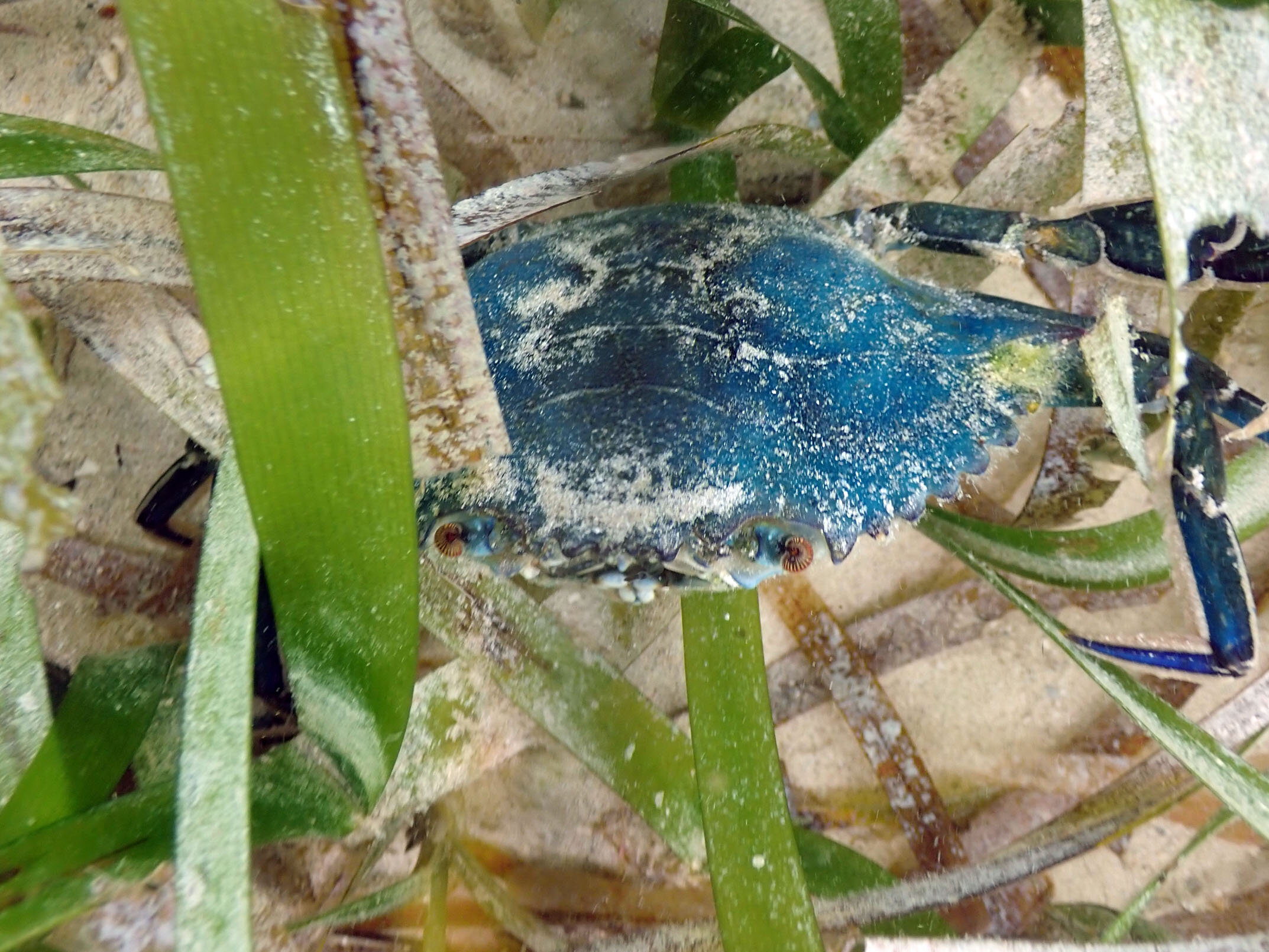
One of the local inhabitants who regards the Le Dragon wreck site as home.
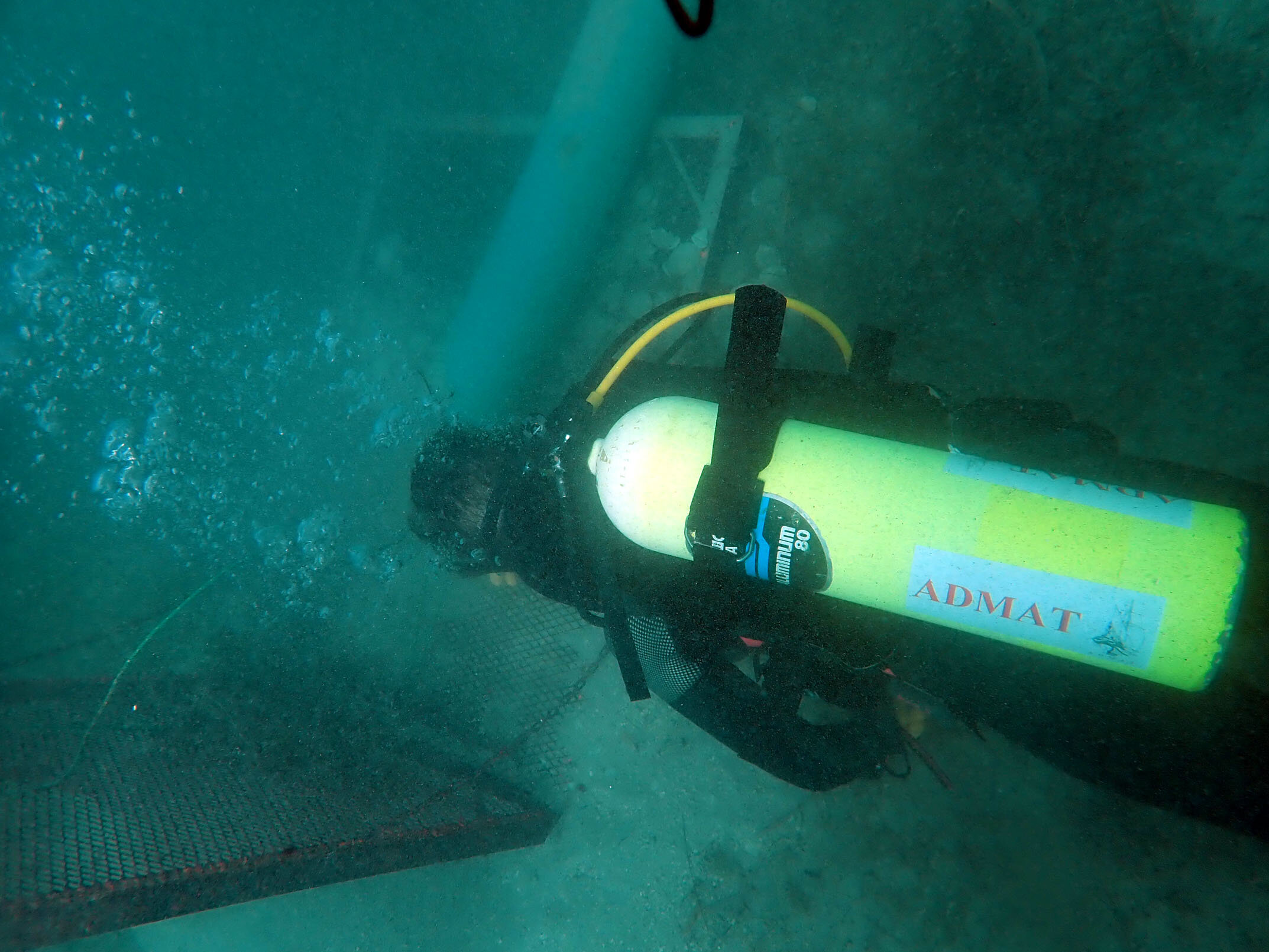
Manning the tail gate.
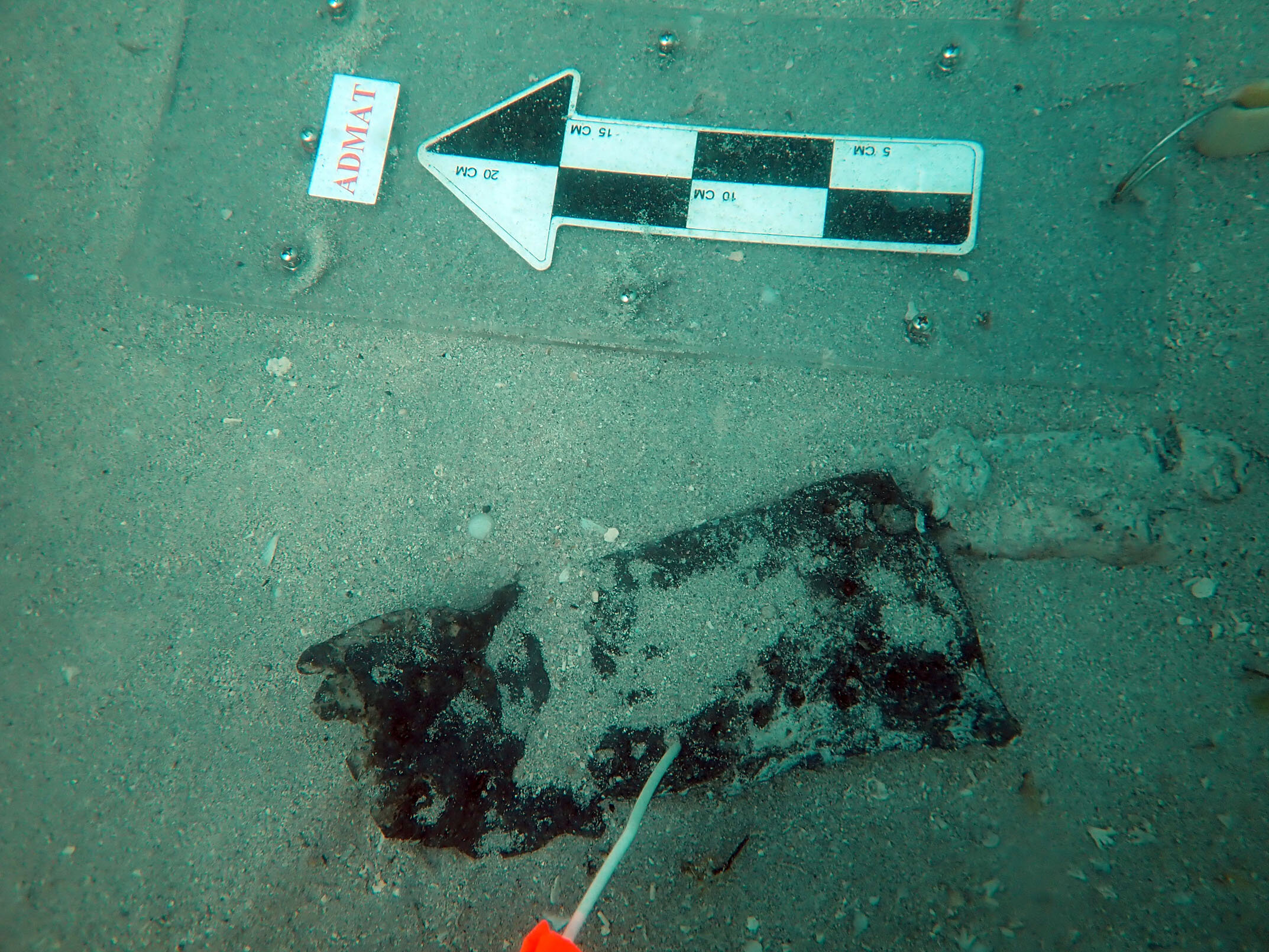
A lead patch is found by the Aquascan Aquapulse Metal Detector.






























